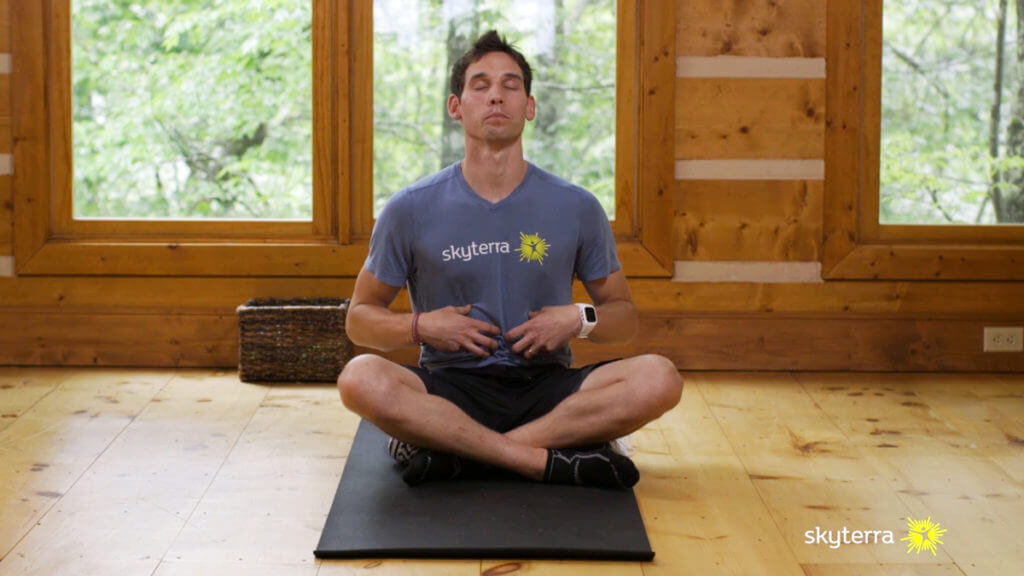Your Body on Breathwork

“Take a deep breath.” This advice is often the first thing we hear when we’re stressed, overwhelmed, or distracted. But did you know that there are ways to breathe better, and that you can proactively practice breathing to induce a bevy of benefits? That’s what breathwork is all about.
The term “breathwork” is used to refer to any type of practice that utilizes breathing for physical or mental health benefits. The general term covers a spectrum of techniques that can be applied for different purposes.
Breathwork (sometimes referred to as pranayama) has centuries-old roots in yoga and tai chi; the modern emergence of breathwork began in the 1970s. Some of the early practitioners' methods were far out by today’s standards, but since then, a number of practical techniques have taken shape. Now, an increasing number of experts and researchers across disciplines and fields swear by breathwork’s ability to control physiological and psychological states, improve performance, and even assist in healing conditions like sleep apnea, depression, and anxiety.
How is Breathwork Performed?
There are many types of breathwork techniques and practices. The one that’s right for you depends on your intentions and goals. Some breathwork techniques are fitness-oriented, while others are applied for mental, emotional, or spiritual purposes.
Broadly speaking, fitness-centric breathwork practices are meant to increase oxygen levels in the body and/or activate the sympathetic nervous system (the fight or flight response). These methods may involve forceful inhalations and exhalations, fast cadence breathing, and intermittently holding the breath. The Wim Hof method is one example.
Fitness-focused practices like this one help to improve physical performance and cultivate a sense of alertness, energy, or being generally "fired up". It follows, then, that this type of breathing is not the ideal choice for someone who is looking for calmness, restoration, or stress relief.
Instead, those who are interested in breathwork primarily for its healing, restorative, or meditative benefits should look to techniques rooted in pranayama (yogic breathwork). Before you get started, know that some pranayama techniques are energizing, heating, or stimulating. Others are calming, cooling, and restorative. Evaluate your personal needs to choose the optimal practice for you.

Types of Pranayama Techniques
Choose your goal and select a practice! Each title links to a video on Skyterra At Home. Some videos are free; some content may require a free trial. Full subscriptions start at only $9.99 per month.
If you’re a beginner, you might wish to start out with a practice that is less regimented and easy to perform without prompts. In that case, basic conscious breathing is an extraordinary option.
Simply bringing your attention to the breath can help promote a healthy stress response, increased mindfulness, and a greater sense of well-being and positivity. Once you get it, you can simply set a timer or put on music and begin your practice. Tap into this technique anytime you need it – before a meeting, after a high-stress situation, or when you’re nervous.
Takeaway Tips for Better Breathing
A few tips for integrating breathwork into your regular routine:
- Aim for 10 minutes per day. That’s how long we practice daily here at the retreat. Every morning, we welcome the day with a short session to connect with our breathing, our selves, and the world around us. These practices blend a variety of breathwork techniques with light movement. Try them at home! Check out an entire playlist of our Connect classes on Skyterra At Home.
- Use nasal breathing. Breathing through your nose warms, humidifies, and filters the air entering your sinuses and lungs. It also promotes more oxygen uptake per breath.
- Breathe horizontally. In day to day life, most people tend to take shallow breaths into the chest area. Instead, learn to breathe deeply, from the abdomen. This better engages the diaphragmatic muscles, which can work wonders for your stress response, oxygen uptake, and digestion. Pay attention to what part of your body your breath fills first. Ideally, your breath should make your abdomen inflate in and out. The breath should begin in the belly, expand through the ribs, and then move into your chest, using your primary and secondary diaphragmatic muscles. To work on this, try three-part breathing (a pranayama practice) or this video on breathing mechanics (a fitness-focused practice).
- Be mindful. Tune into your breath daily. In Ayurvedic medicine, they say we are only granted a certain number of breaths in our lifetime. Our advice is to cultivate wisdom on how to use them more wisely!
SOURCES
https://www.mindbodygreen.com/articles/what-is-breathwork-good-for
https://www.ncbi.nlm.nih.gov/pubmed/28296480
https://link.springer.com/article/10.1007/s10879-011-9180-6
https://www.ncbi.nlm.nih.gov/pubmed/22146488
https://www.ncbi.nlm.nih.gov/pubmed/28670907
The Oxygen Advantage By Patrick McKeown